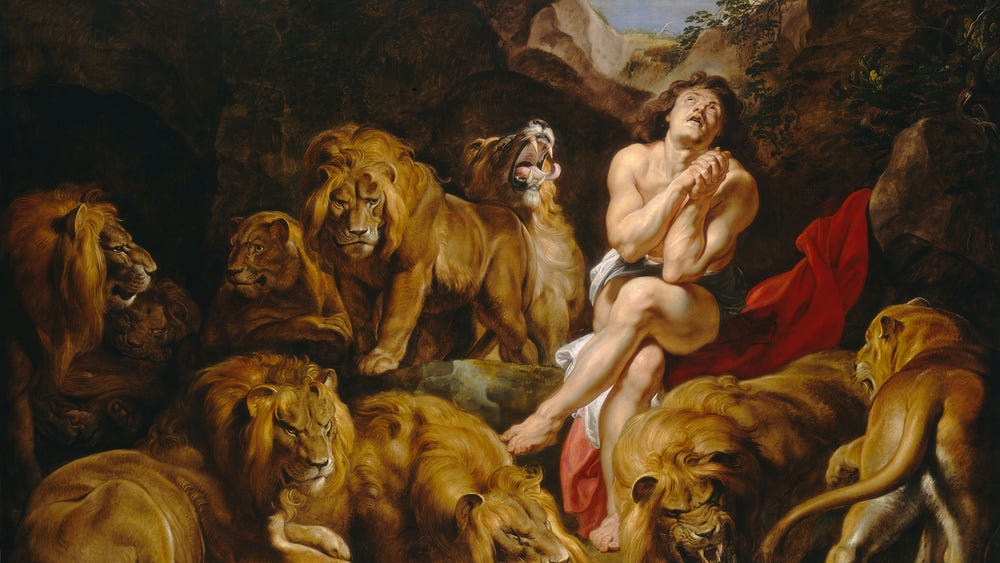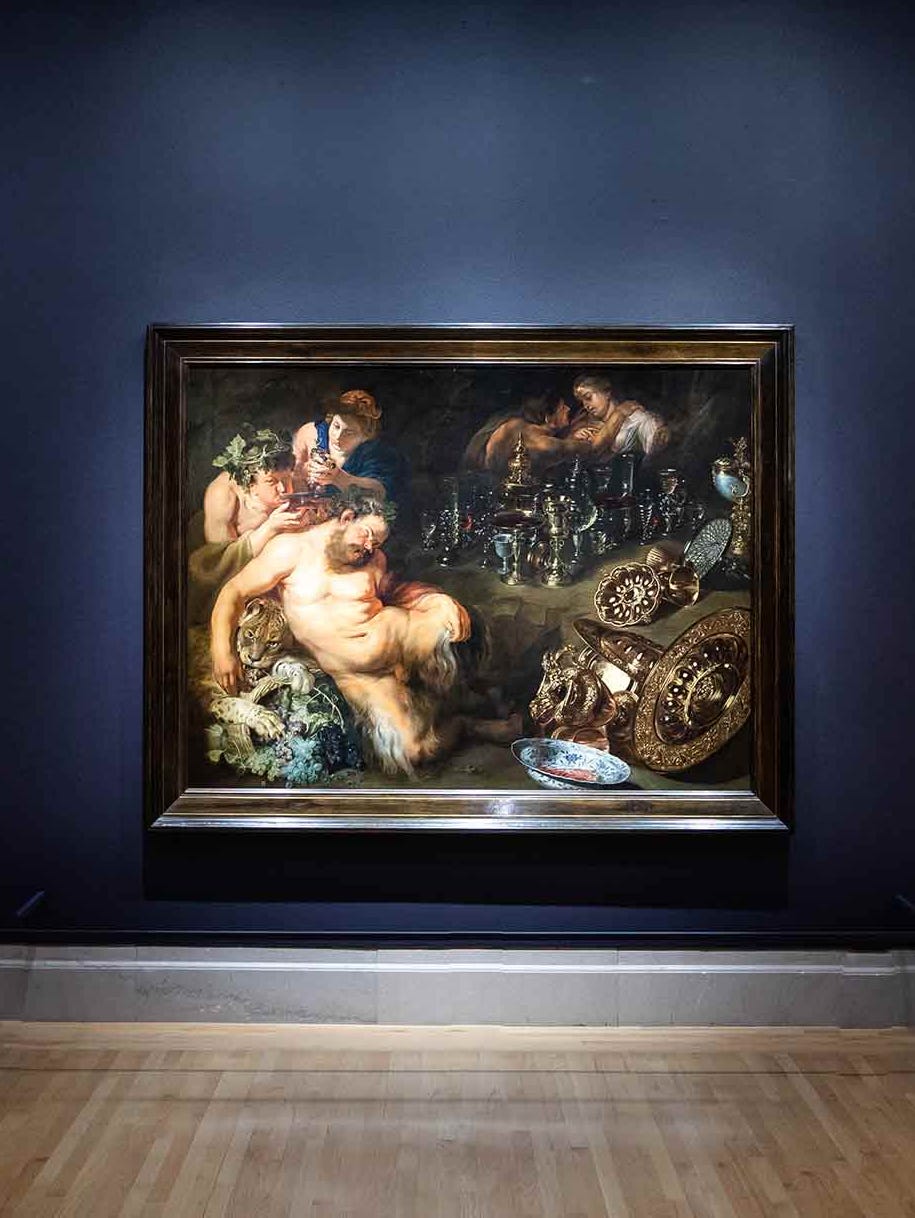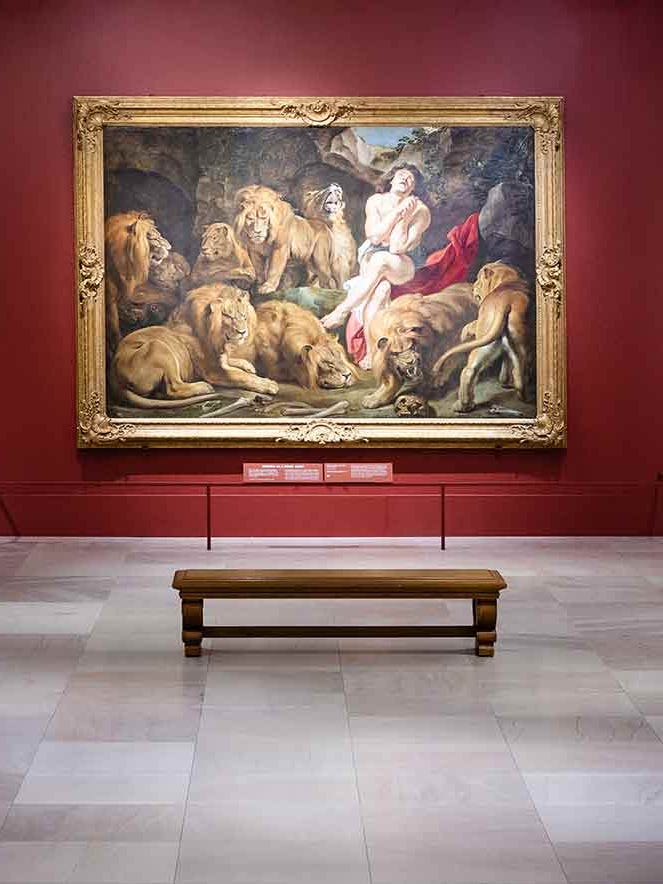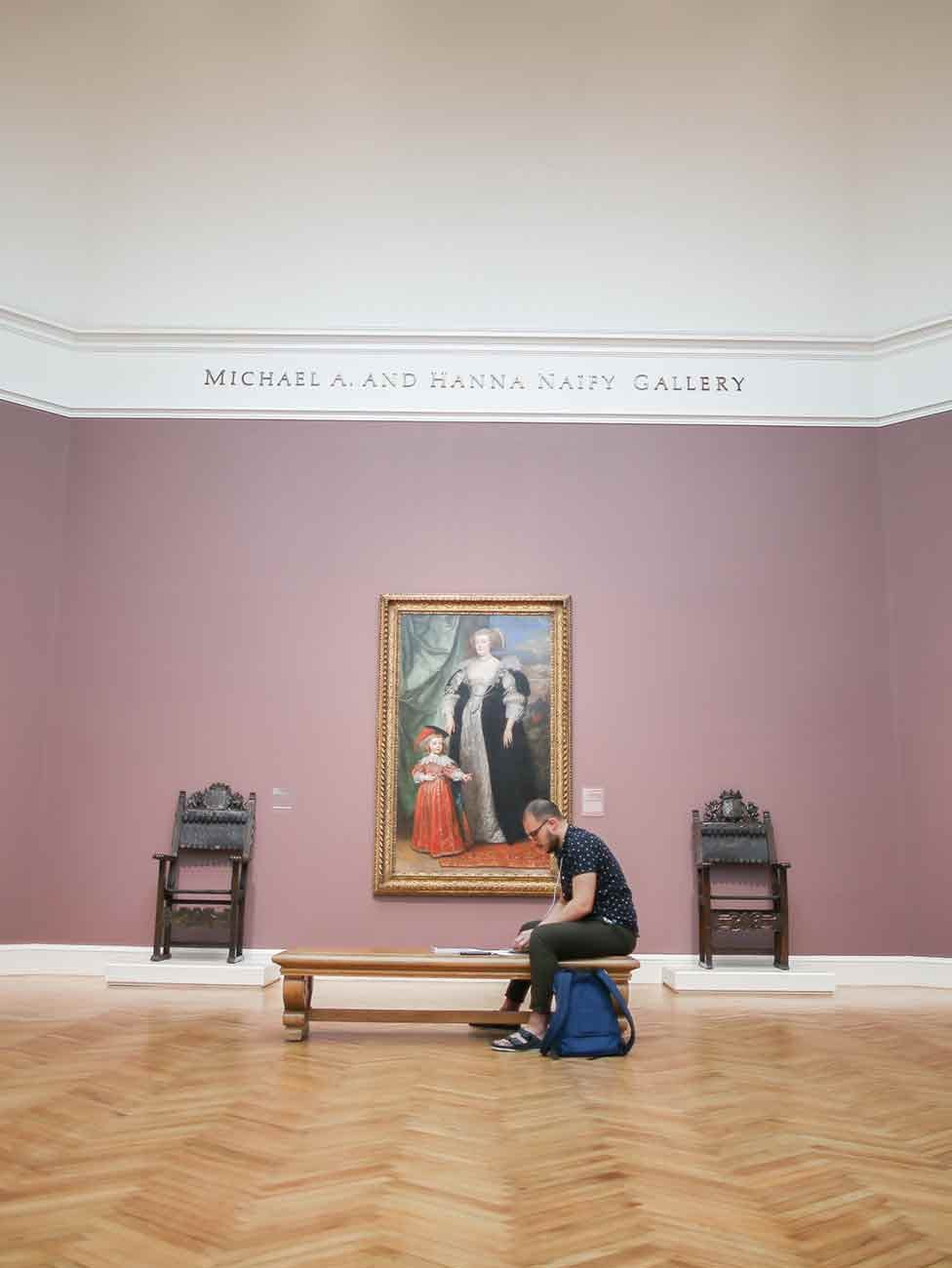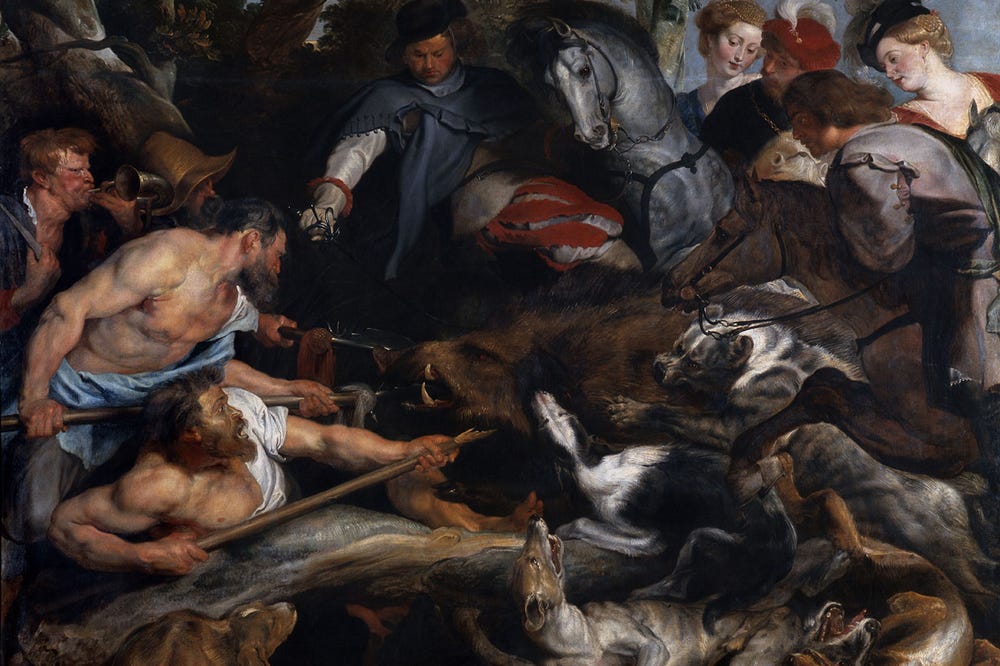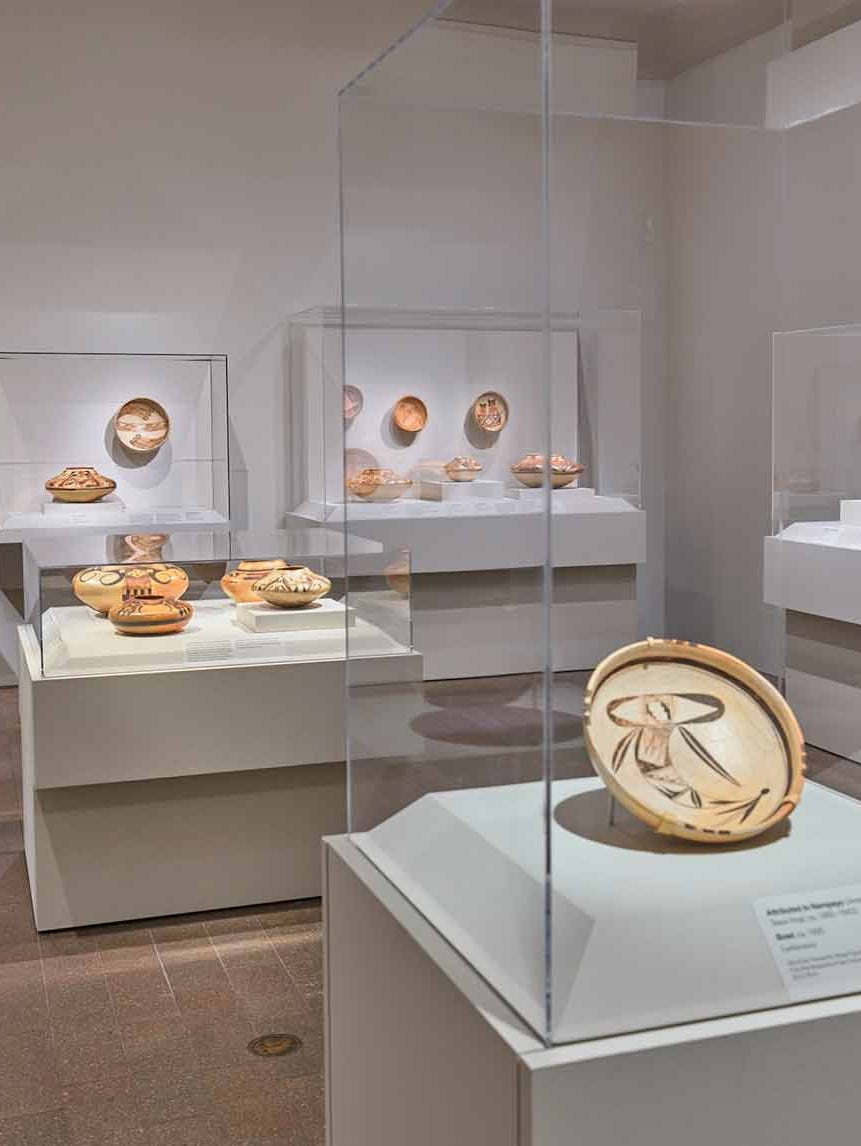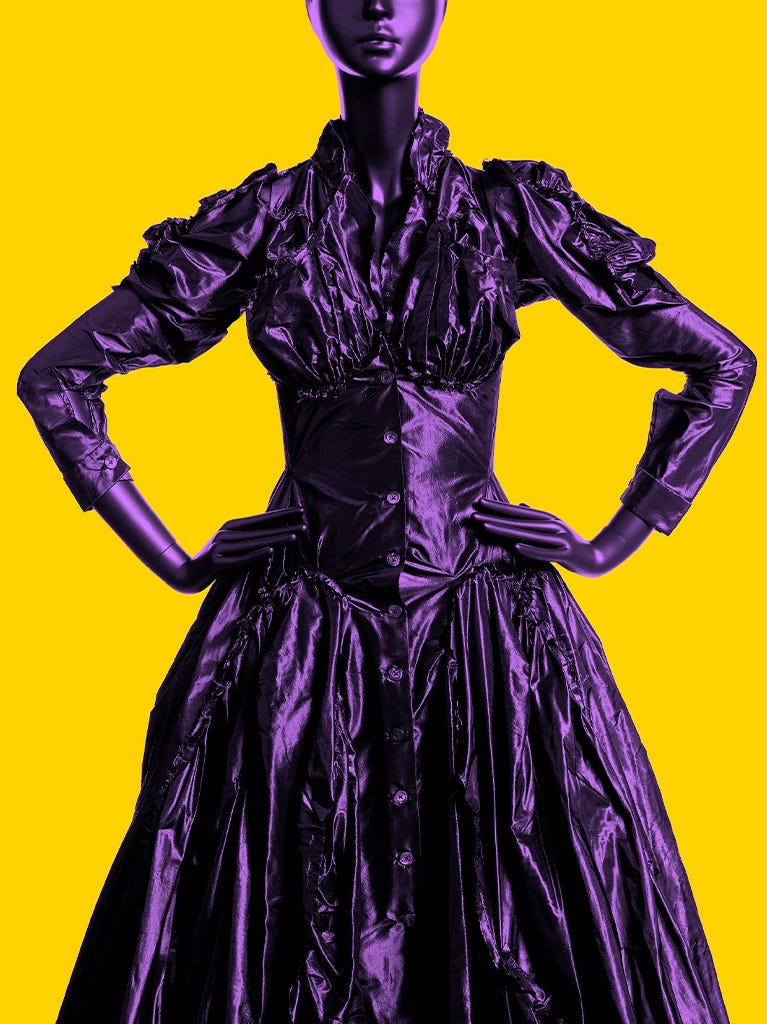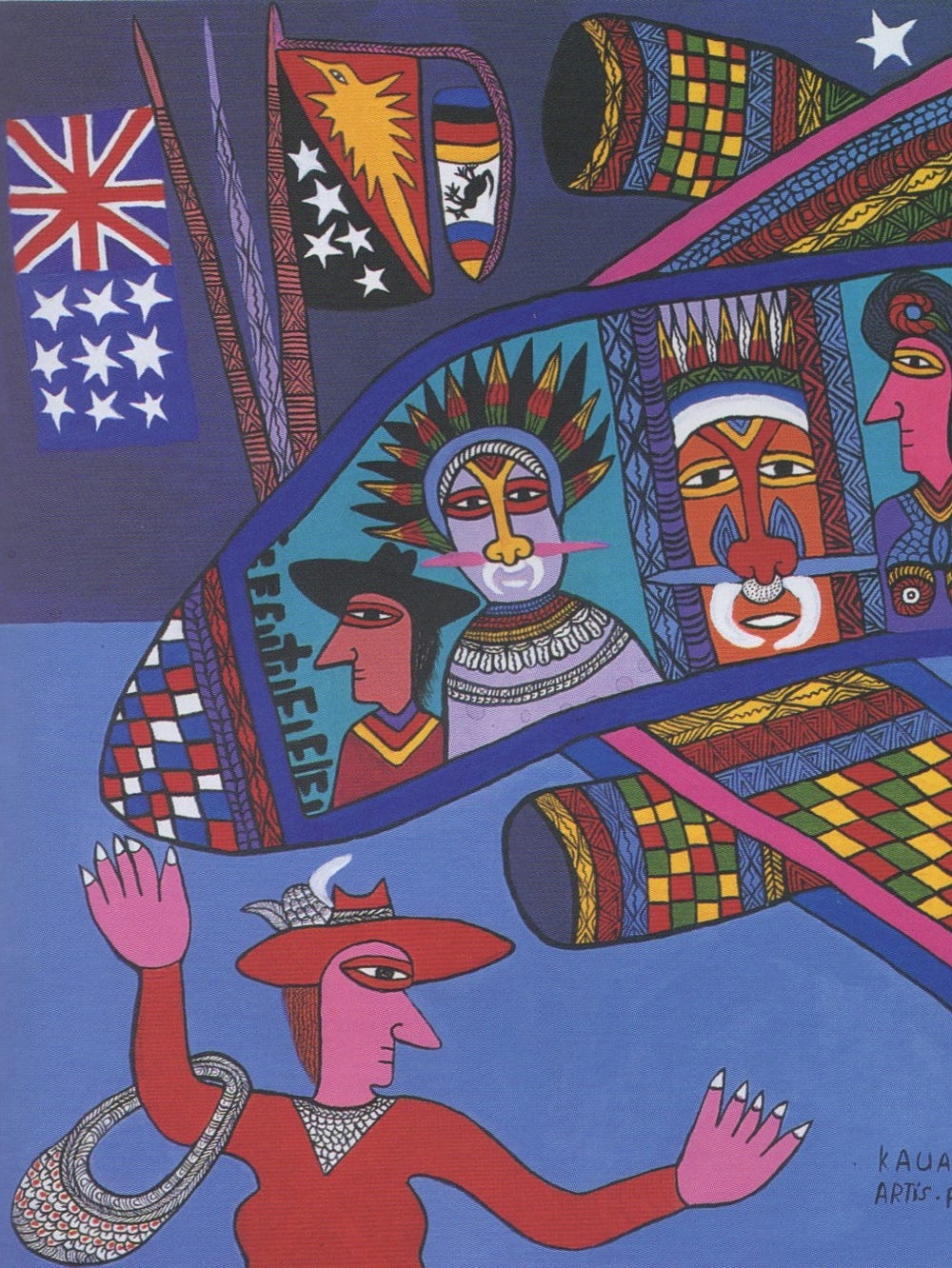Peter Paul Rubens, Daniel in the Lions’ Den (detail), ca. 1614/1616. Oil on canvas, 88 1/4 x 130 1/8 in. (224.2 x 330.5 cm). National Gallery of Art, Washington, Ailsa Mellon Bruce Fund, 1965.13.1. Courtesy the National Gallery of Art, Washington DC
Early Rubens
Jump to
Gaze through gilded frames and into the past, to a world inspired by biblical and mythical tales. Witness these epic stories leap forth from massive paintings, and let yourself be swept away in the drama.
Peter Paul Rubens (1577 – 1640) was celebrated for his skillful handling of oil paint; his sensuous coloring; and his taut, action-packed depictions of dramatic narratives. Early Rubens focuses on what is arguably the artist’s most innovative period of production, from 1608 until about 1620. It was during these years that Rubens rose to the highest ranks of European painting. He did so through a series of social and artistic choices that laid the groundwork for his later international fame and established a visual style that would guide ambitious painters for generations to come.
Rubens was not just a remarkable artist but also an international diplomat, businessman, intellectual, friend to scholars and monarchs, and master of a productive workshop. His early biographers branded Rubens as an aristocrat-artist, the favorite of Europe’s nobles, but his ultimate success was far from an assured outcome. Observe Rubens’s meteoric rise to master of the Northern Baroque.
In depth
Rubens’s Italian Years
After an eight-year sojourn in Italy, Rubens returned to Antwerp in 1608 to attend to his dying mother, and it was far from certain that he would remain long in his hometown. As he wrote to a friend, even the following spring he had not yet decided whether “to remain in my country or to return forever to Rome, where I am invited on the most favorable terms.” Italy was transformative for Rubens, both in terms of his artistic skills and his professional ambitions. While altarpiece commissions helped build Rubens’s reputation as a painter capable of communicating religious piety in large, public works, his skill in smaller cabinet pictures — especially scenes of ancient history or mythology — simultaneously broadened his appeal among individual connoisseurs. Our exhibition will open with a small but broadly representative group of works from Rubens’s Italian years that provide context for his later artistic triumphs.
These early experiences informed the social and intellectual circles that Rubens sought to join once he determined to settle in Antwerp. Through a selection of portraits — some commissioned, others intimate portrayals of close friends and family members — the exhibition addresses how Rubens sought to establish himself as a “gentleman painter” and how he acquired increased social and professional footing through his relationships with Antwerp’s heady mix of humanists, merchants, and religious thinkers. For instance, the Fine Arts Museums’ paintings of silk merchant Rogier Clarisse and his wife, Sara Breyel, represent a single commission around 1611, yet these portraits also testify to a widening network of relationships that touched the humanist Jan Woverius and the Dominican church of St. Paul’s and provided Rubens professional and intellectual activity for years to come.
Drama in Rubens’s Oeuvre
As a bastion of Catholic faith in the face of Dutch Protestantism, Antwerp was eager for a visual language to match its strident support of Rome’s Counter-Reformation priorities. Rubens’s talent for capturing emotion and complex psychology in the movements of the human body was essential to his success as a painter of Christian history. The jewel-toned Annunciation from the Kunsthistorisches Museum, Vienna, will introduce a powerful gallery featuring scenes from the life of Jesus. Additionally, the Michielsen triptych from the Royal Museum of Fine Arts, Antwerp, will be shown in its newly cleaned state for the first time. These images not only stunned Antwerp at the time of their unveiling; they also set a new template for religious images, both in Europe and far beyond.
Rubens’s talent for portraying gripping human drama was not limited to devotional imagery, of course. The same ability Rubens had to convey pathos and to draw out intense emotion from a viewer was also integral to his success as a painter of scenes for domestic spaces and picture galleries. His discerning patrons were well informed about antique art and literature, as well as recent artistic developments in Italy, and they were delighted by Rubens’s skill at incorporating these sources into his own pictorial inventions. Far more than mere imitations of older artworks, paintings such as The Massacre of the Innocents exemplify an artistic challenge to balance horrifying subject matter with compelling visual beauty. Creating this sort of psychological drama was as important to Rubens’s mature work as were his references to Michelangelo and the antique.
Prints and Drawings
During the 1610s, Rubens began to consider how best to publish his pictorial inventions through the mediation of reproductive engravers. Although earlier attempts had been made to reproduce his paintings, it was around 1619 that he began to cultivate relationships with specific engravers he felt could best translate his compositions to print. With major examples from the British Museum and Rijksmuseum, the exhibition will present the varied array of printmaking projects in which Rubens collaborated.
The exhibition culminates with a selection of Rubens’s large gallery pictures, works frequently scaled to compete with tapestry or fresco painting. Mural-sized works such as the National Gallery of Art’s Daniel in the Lions’ Den will be joined by other large, life-size scenes to create an immersive viewing experience. These were the paintings that fired Rubens’s international reputation as they began to enter the collections of aristocrats and royal advisors during the 1610s. This important final gallery will permit visitors to appreciate the size of Rubens’s ambition while also understanding the role his vibrant workshop played in his international success.
In the news
Stories
Gallery
Sponsors
This exhibition is organized by the Fine Arts Museums of San Francisco and the Art Gallery of Ontario.
Presenting Sponsors
John A. and Cynthia Fry Gunn
Diane B. Wilsey
Lead Support
The Michael Taylor Trust
Major Support
With support from the Government of Flanders
Gladyne Kenderdine Mitchell
The Bernard Osher Foundation
Significant Support
San Francisco Auxiliary of the Fine Arts Museums
The Diana Dollar Knowles Fund
Valentino
Generous Support
Phoebe Cowles and Robert Girard
George and Marie Hecksher
Robert Lehman Foundation
Additional support is provided by The Gladys Krieble Delmas Foundation, Samuel H. Kress Foundation, and an anonymous donor.
This exhibition is supported in part by an award from the National Endowment for the Arts.
